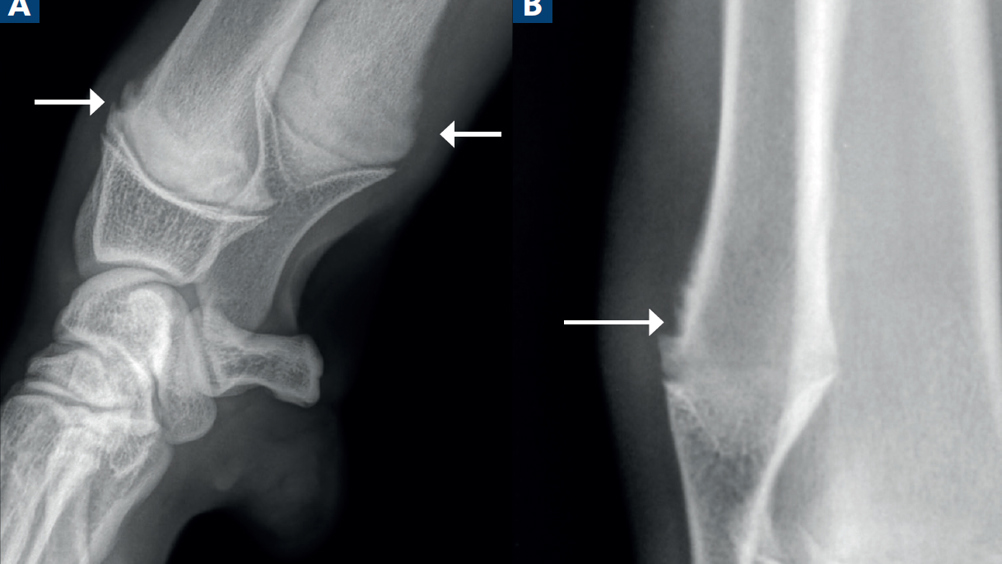References
The importance of early radiological assessment in juvenile canine lameness

Abstract
Radiography remains the cornerstone in evaluating lameness in small animal practice, and early identification of pathological musculoskeletal conditions is imperative, particularly in the juvenile or skeletally immature patient. Delays in diagnosing conditions affecting longitudinal bone growth or joint congruity can lead to significant growth-related complications. This article discusses the radiological aspects of key orthopaedic conditions in young canine patients, focusing on the importance of early diagnosis and intervention. A narrow window often exists to treat the cause before the onset of arthritis and chronic lameness. The discussion centres on selected conditions, such as hip and elbow dysplasia, osteochondrosis, humeral intracondylar fissures, retained endochondral cartilage cores, hypertrophic osteodystrophy and physeal trauma. The veterinarian's role in achieving timely and accurate diagnosis is emphasised. Common pitfalls and normal variations are also addressed.
Lameness is a prevalent condition prompting pet owners to seek veterinary care, often leading to radiographic examination of the affected limb. Despite advancements in diagnostic imaging, radiography remains the cornerstone in evaluating lameness in small animal practice. Early radiographic evaluation is crucial in juvenile canine patients, especially larger breeds, where prompt identification of musculoskeletal pathology is essential because of the risk of serious growth-related complications. Delayed diagnosis and inappropriate treatment in certain conditions can result in abnormal bone growth, joint incongruity and irreversible osteoarthrosis (Fox, 2021). This emphasises the continued importance of radiography in the management of lameness in young patients.
This article discusses radiological aspects of key juvenile orthopaedic conditions for which timely diagnosis and intervention are beneficial for the patient. The discussion will focus on hip and elbow dysplasia, osteochondrosis, humeral intracondylar fissures, retained endochondral cartilage cores, hypertrophic osteodystrophy and physeal trauma. Emphasis will be placed on the importance of understanding patient signalment, disease prevalence in certain breeds, recognising normal anatomical variations and avoiding common pitfalls in radiographic interpretation.
Register now to continue reading
Thank you for visiting UK-VET Companion Animal and reading some of our peer-reviewed content for veterinary professionals. To continue reading this article, please register today.

